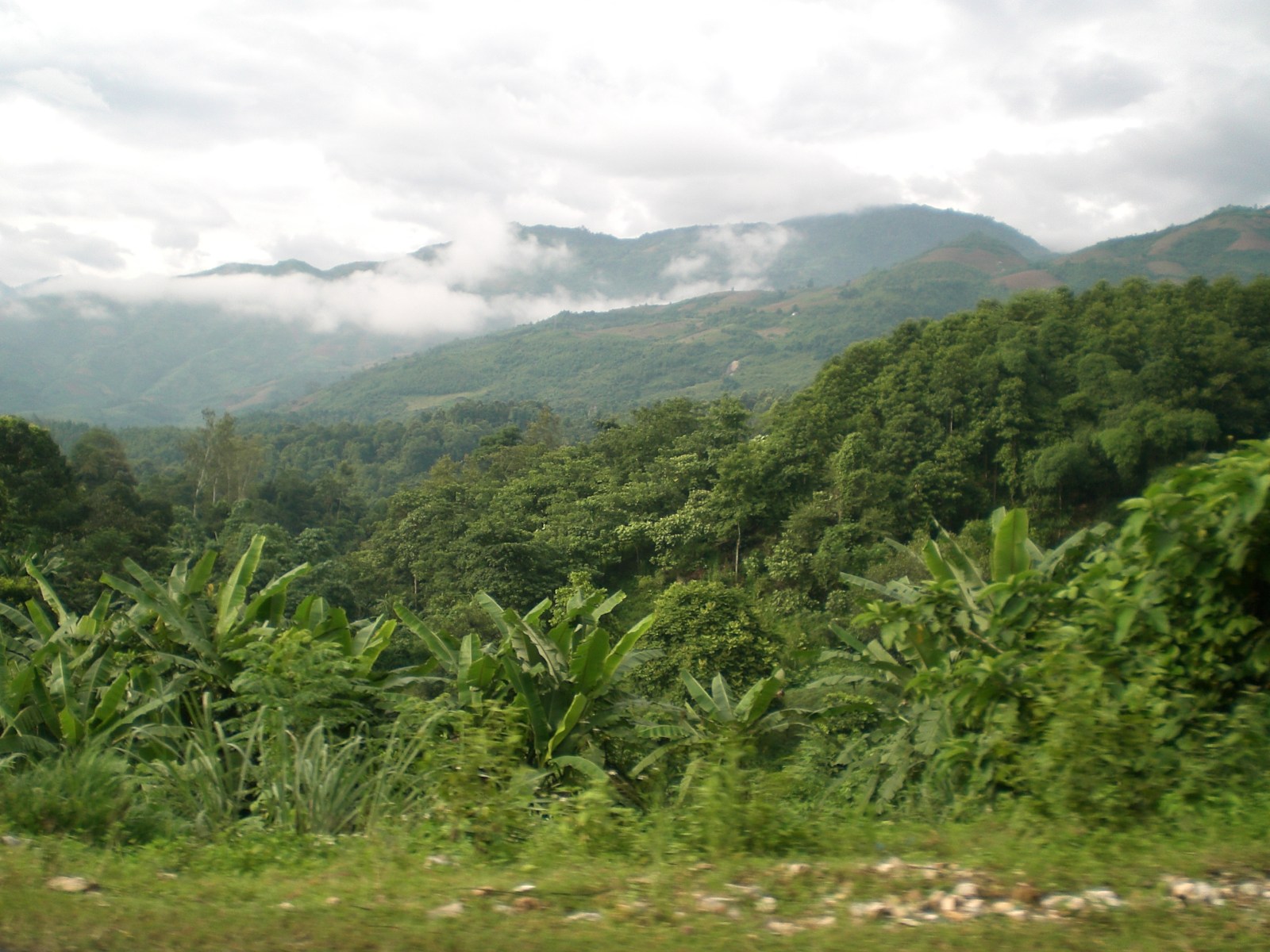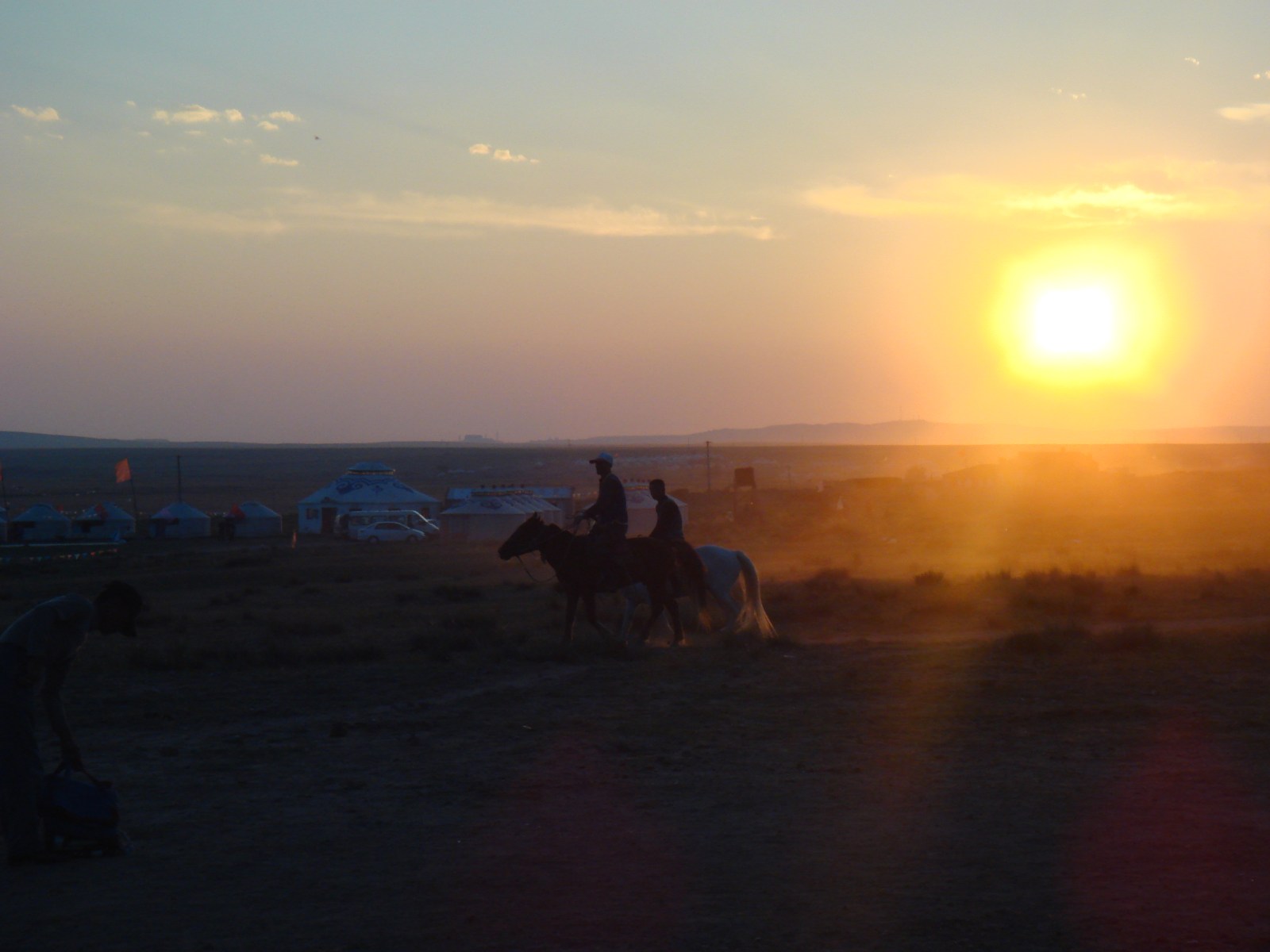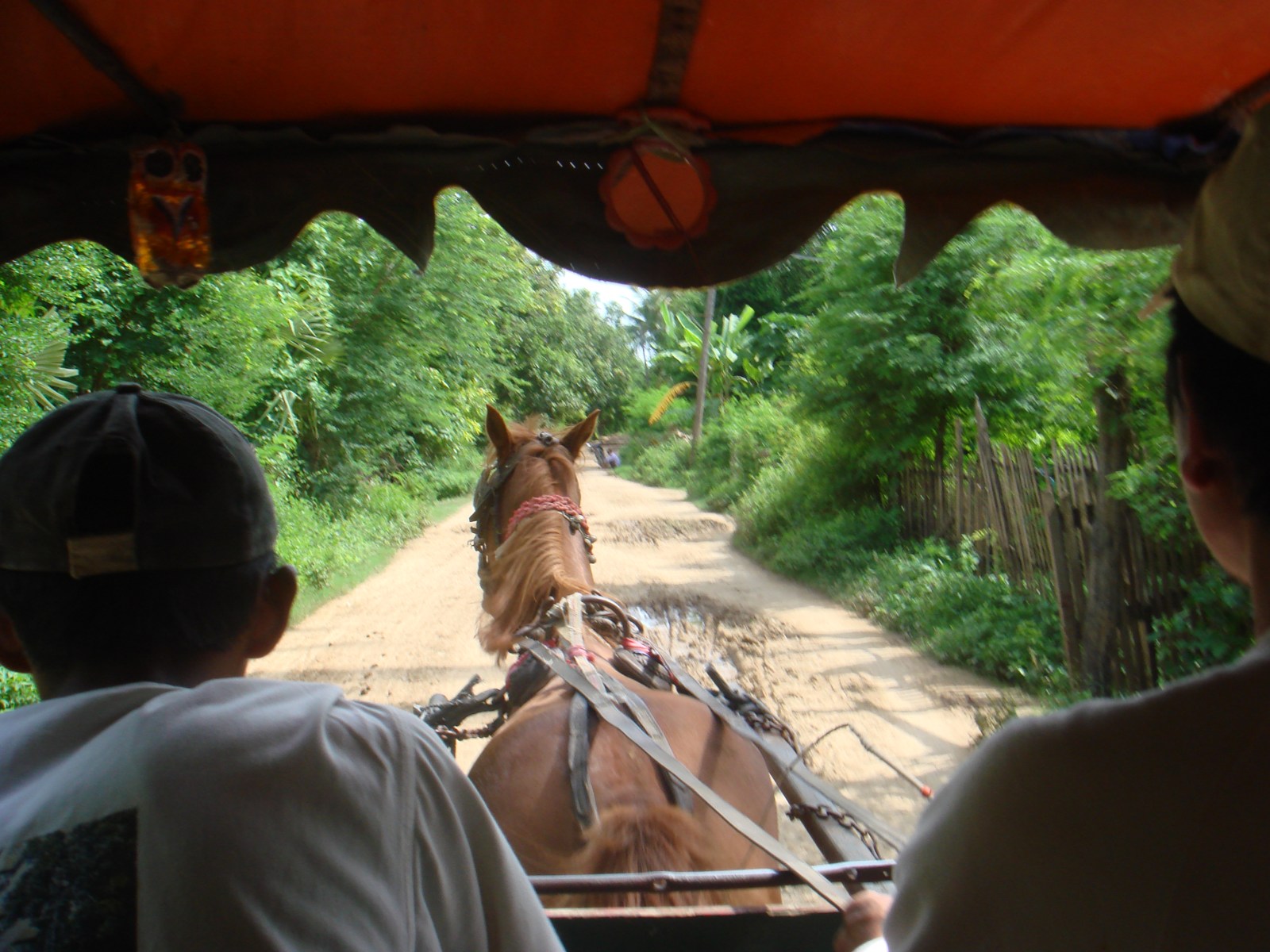
There is so much about this trip that should place it high on anyone’s itinerary for Vietnam – the misty rice terraces around Sapa with stunning vistas of just about every shade of green imaginable; the hill tribes that are very distinct from the rest of Vietnam and even mountain to mountain; the train journey up through the mountains that gives a break from the usual tourist buses that form the backbone of any Vietnam trip; and the access to this pure mountainous jungle that surrounds you at all times
My biggest tip is to jump on a motorbike (if you can’t ride, it is super easy to arrange for someone to take you) and head off across the valleys to see all of this. Having the rice terraces and mountains zip by amongst the small hill villages on a motorbike is the most “Vietnam” experience I felt in all of my trips there and is not to be missed
Smaller tips:
- I went in July time, which was still fun but be aware that it is likely to be hammering it down at this time of year which restricts the views and the hikes you can do
- Sapa is nice enough and it’s lovely to see the various hill tribe outfits and the pride that the local people have in them, but the real highlight is heading into the valleys and mountains to see the villages and natural scenery
- Renting a motorbike or a driver to go with you should be super cheap – USD5 a day
- To get to Sapa its a no-brainer to take the overnight train, rather than the bus which takes up to 10 hours. Just make sure to book the best cabins – the basic cabins / seats in trains in Vietnam may not meet your expectations of comfort (or cleanliness)
- And for ideas on how a trip to Sapa can fit into an itinerary for experiencing the highlights of Vietnam, see this entry A 3 week itinerary for the highlights of Vietnam

Ho Chi Minh City / Saigon is one of the great South East Asian cities and brimming with energy as the epicenter of Vietnam’s boom. The city itself is more about wandering around enjoying the food and soaking up the way of life as the thousands of motorbikes swerve and swarm impossibly round you. But also make sure you make time to take a boat trip around the Mekong Delta to see the way people work, eat, sleep and live on the river, and the nearby Cu Chi Tunnels to see just how claustrophobic it must have been for the fighters in the Vietnam War
A short entry for HCMC, but to see how it can fit into an itinerary for experiencing the highlights of Vietnam, see this entry A 3 week itinerary for the highlights of Vietnam

Tasmania is one of the jewels of Australia for its rugged remoteness, world-class natural landscapes, unique history and fewer tourist numbers compared to some of the other famous sites. It also has the added benefit of being far smaller than some of the other parts of Australia, which makes it ideal for a week-10day road trip. The itinerary below gives you the highlights of this wonderful little island
3 high level tips:
- Could do in a week? You could do this itinerary in a week by shaving off Port Arthur and the Tamar Valley, but it will feel a little rushed. 10 days far better . . . and don’t make the error most people make which is dropping the west coast – it is the highlight of Tasmania
- UNESCO rate Tasmania – the high scores give an idea for just how impressive Tasmania is, and in particular the West Coast. But don’t only take my word for it. UNESCO have 10 potential criteria for a site to be designated World Heritage, with only one of the criteria needed to be met. The Tasmanian Wilderness Area in the south west part of Tasmania meets 7 of the 10 criteria which, alongside Tai Shan in China, places it at the top of all sites in the world. Really is quite a remarkable place to visit
- Tasmania or South Island New Zealand? The two are often compared as they’re relatively close and similar sizes which, considering the world-class natural landscapers of the South Island, gives you an idea of the quality on offer in Tasmania. Broadly, I’d say that the South Island just nudges it from a natural sites point of view based on its snow capped mountains, glaciers and fjords, but Tasmania clearly wins from a cultural significance point of view and might just shade it based on its more compact size for a roadtrip and its lower fellow tourist numbers

From Hohhot there are a series of standard tours that take you to a few of the places nearby area, but primarily to the Xilamuren grassland, where you can see local horse riding, and Resonant Sand Gorge of the Kubuqi Desert, where you can slide down the dune and generally play around in a full-on desert. All of this with a night staying in one of the traditional Mongolian Yurts
The whole experience is relatively fun as you do get to see some great countryside, but unfortunately most of these tours are very much catered for the domestic tourist market, which means large numbers of fellow tourists, often spaces concreted over to make way for the masses, manufactured “traditional horse riding shows”, and, of course, the serene-breaking megaphones.
I’d say give it a go if a bit tight on money and don’t mind the mass tourist nature, but otherwise see if you can get a tour company that takes you further afield so that you can escape the crowds and see some of the more traditional Mongolian culture rather than the Chinese branded version

Travelling in Burma (Myanmar) is a bit like being in a parallel world – like the rest of the world went one direction and Burma just took the other turn on the highway. Whilst that may be starting to change a little bit as the country opens up more, you can be sure that there will be continued political swings that keep Burma as one of the countries firmly in the “unusual” bucket for travelers. This, plus its series of genuinely world class attractions, makes it a superb travel destination for a 2 week trip
Burma for most people is all about the 4 key highlights of Yangon, Mandalay, Bagan and Inle Lake. All are definitely worth seeing and will form the core of any trip you make there. Bagan, with its world-renowned temples spread in their thousands across the plain, and Inle Lake, with its stunning mirror effect and serene villages on stilts, are arguably the highlights, with Mandalay and Yangon as interesting cities that you need to fly into, but well worth the visit. I’ve included them below in a 2 week itinerary that won’t be rushed whilst also making sure you get the most out of your time here
I’ve written below some further travel tips for travelling around Burma, but my 2 biggest tips are:
- #1 Is it safe? You will naturally have seen in the news Burma very often flaring up with the latest crisis and the story of the country is truly a sad one considering the repression in particular of the ethic minorities and continued belligerence of the military junta. But, from a tourist point of view, such changes have not in the slightest stopped the country as it opens up more and more to overseas visitors. Whilst it may sound like a country to avoid based on headlines, thousands more come to the country each year than the year before and flare ups occur only in the remote areas foreigners are not allowed in, and still with no tourists ever having come to harm because of the troubles. There are far more countries in the world with far more dangers that receive far more tourists on a regular basis
- #2 A feeling of real Burma. Consider wandering off the beaten track just a little to see the real country that has been surprisingly untouched by the tourism wave of the 4 main sites. One of the best adventures I’ve experienced was the 6 day trip down the Irrawaddy River by ferry in Northern Burma from Myitkyina (or you can start in Bhamo / Katha to reduce the time) to Mandalay. Breathtaking mountainous jungle vistas, the chance to see the real local villages along the mighty Irrawaddy River, and the old echoes of the former colonial past. A truly great travel experience and I’ve included the details in the travel entry – Exploring Northern Burma by train and ferry from Myitkyina, via Bhamo and Katha to Mandalay

Inle Lake is a super relaxed part of Burma where you fill your days either zipping around in the lake boats to the floating markets, gardens and temples, or simply laze around in this serene location watching the perfect mirrored effect on the water. A must if you’re visiting Burma, and I would recommend it as part of this
2 weeks itinerary for the highlights of BurmaI won’t go into too many tips as all you really want to do is get a place on the water and rent a boat for one or two days to head off and explore, but the two places I really enjoyed were the leaning pagodas of Inthein in the south west and the Jumping Cat Monastery for its sheer randomness

One of the most adventurous and “off the beaten track” trips I’ve done was the journey back from Myitkyina back to Mandalay via trains, buses and ferries. As we become more globalised and routes open to mass tourism, there are fewer and fewer places in the world that offer what Northern Burma does – a genuine feeling of adventure as you pass through towns and transit routes still largely untouched by the oncoming wave. When you include the breathtaking views of the mountains, the chance to see the real local villages along the mighty Irrawaddy River, and the old echoes of the former colonial past, this is a truly great travel experience and one that can easily be combined with a 2 weeks itinerary for the highlights of Burma.
I’ve listed more detailed tips below, but three key ones:
- Is it dangerous? The north, like many other parts of Burma, has seen continued trouble in the the form of various low-level uprisings and separatist movements in the three states you’ll be passing through (Kachin, Shan and Sagaing). But tourists are already not allowed in any of the spots where trouble is flaring up. Could you be unlucky and find yourself in the wrong place at the wrong time? Yes, but bear in mind that the route you are travelling is a key transit routes for this part of the country that has various options should the situation change, and that tourists are not targeted. In short, there are far more places in the world you could get in trouble than Northern Burma
- Can my route change? Yes, it can. The ferry ride from Bhamo and Katha to Mandalay is one that seems to be consistently fine, but the bus / ferry route from Myitkyina to Bhamo seems often to be closed off. Obviously you need to check into this before you set off (I asked locals even in Yangon who were able to answer me very quickly), but even if you get stuck when you arrive you have options of the train from Myitkyina to Katha and exclude Bhamo, or just simply to fly
- Enjoy while you can! Whilst my adventure was all the way back in 2006, this part of Burma is still largely untouched by the growing tourism wave that has hit the 4 key tourist destinations in the rest of the country (Yangon, Mandalay, Bagan and Inle Lake). Enjoy it while you can!

Mandalay itself isn’t that attractive as its basically a classically rapidly sprawling Asian city, with all of the noise, concrete and mess that tends to go with this. Also, surprisingly, the Mandalay Palace which you’d think would be the central attraction is also a bit dull. But, the areas around Mandalay make it very much worth checking out
I’ve listed below some more general tips, but in particular be sure to check out:
- Mandalay Hill – when walking around Mandalay, it can feel a bit like one sprawling road after another and the sides of the Palace are LONG so take a while to look around. Instead, if near the Palace, head up Mandalay Hill for great views over the whole city and Palace, and some smaller temples and pagodas on the way up the nice covered stairway
- Mingun Paya – take a short boat ride up river to this rather unusual site. It’s unusual in the sense that 1. It was, at the time, supposed to be the world’s largest stupa. Only “supposed to be”, because the King who sanctioned its construction died with only 1/3rd completed. 2. Now it is basically the world’s largest pile of bricks. 3. It has large crack down its side from an earthquake in 1838. 4. Right next to it is the Mingun Bell which at 90 tonnes has been at various times in history the world’s largest bell. Not enough for you? Its a nice boat trip
- U-Bein Bridge -the world’s longest teak bridge and a route used regularly by the nearby locals and monks. The cool thing is that the water level varied dramatically through the year so, in wet season you see various buildings largely underwater, whereas in dry season you see the buildings from a strangely high bridge
- The Maha Aungmye Bonzan Monastery within the former royal capital of Inwa. The monastery itself is a stunning yellow, but its also fun to get a horse cart / cycle around the overall site

4000 Buddhist temples scattered across a wide plain in central Burma that is pushed up on 2 sides by the Irrawaddy River and described by Marco Polo as “one of the finest sites in the world”, Bagan rightly claims its title as the highlight of a trip to Burma, a UNESCO world heritage site and one of the top temple sites in the world
But, as with giant temple complexes of such fame, my key tip is not to get dragged into the mass tourism of the place and, instead, try and give yourself an experience that feels more wonder and adventure rather than latest site to tick off on the tourist trail. To do this, give yourself at least a day to head off on a bike and simply get lost amongst the wonder of it all. Your guide / hotel can give you the directions for where will have the fewest fellow tourists at the time of year (usually the Central and South Plains). This will allow you to enjoy Bagan for what it was like before Burma started to really open up and make you still dumfounded that even with so much variety in so concentrated a place, some temples the size of cathedrals simply have numbers rather than a name. Getting that feeling of wonder by having some of these temples largely to yourself is what makes this such a memorable experience

Chiang Mai is a good spot to spend a day or so checking out the temples and markets, or a bit longer if you take one of the famous cooking courses. But the highlight is heading out into the mountains and jungle on a 3 day trek that will let you stay with some of the the hill-tribe villages, interact with the elephants and go rafting down the rivers
The only problem is that these treks have now turned into a bit of an industry and the market is full of companies that provide the “standard package” that most likely won’t meet your idea of adventure and, worse, may be keeping the elephants in very poor conditions
Bests suggestion is to thoroughly do your research for which company you go with; lean more towards a multi-day trek (there won’t be any “authentic” experiences in a day trip of Chiang Mai); or potentially move move a little further north to near the Chiang Rai / Tha Ton area. It’s worth making the effort though because its a great experience










